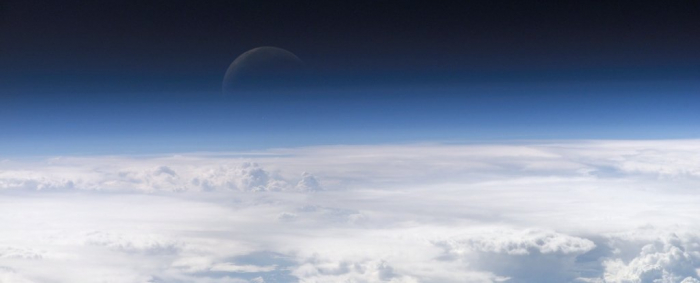The outermost part of our atmosphere reaches nearly twice as far as the Moon and is about 50 times as big as our own planet, new research has shown.
“The Moon flies through Earth’s atmosphere,” says Igor Baliukin of Russia’s Space Research Institute, lead author of the paper presenting the results. “We were not aware of it until we dusted off observations made over two decades ago by the SOHO spacecraft.”
At the boundary of own atmosphere and outer space, there is a cloud of hydrogen atoms that scientists refer to as the geocorona. One of the instruments on the SOHO spacecraft found the signature of that border, allowing it to detect exactly where it is.
That can only be done at certain times, and the new research is the result of fortunate timing that allowed the spacecraft to spot the edge.
The new research could allow scientists to better look for other planets like ours, with hydrogen in their atmosphere and where water vapour is often seen closer to the surface.
Scientists famously captured stunning images of the geocorona around Earth in pictures that were taken using the first ever telescope places on the Moon, which arrived with Apollo 16 astronauts in 1972. But scientists didn't know that they themselves were still wrapped in the edges of the geocorona.
The extra source of hydrogen laying far out from Earth is not enough to allow space exploration, or to support any kind of human life. Down here, it would be referred to as a vacuum.
But fortunately those particles do not pose any threat for anyone interacting with them, such as future space travellers that hope to journey to orbit around the Moon.
“There is also ultraviolet radiation associated to the geocorona, as the hydrogen atoms scatter sunlight in all directions, but the impact on astronauts in lunar orbit would be negligible compared to the main source of radiation -- the Sun,” says Jean-Loup Bertaux, co-author and former principal investigator of SWAN, the instrument that made the founding.
But it could get in the way of future observations around the Moon, the researchers caution.
“Space telescopes observing the sky in ultraviolet wavelengths to study the chemical composition of stars and galaxies would need to take this into account,” adds Jean-Loup.
More about: Earth
















































